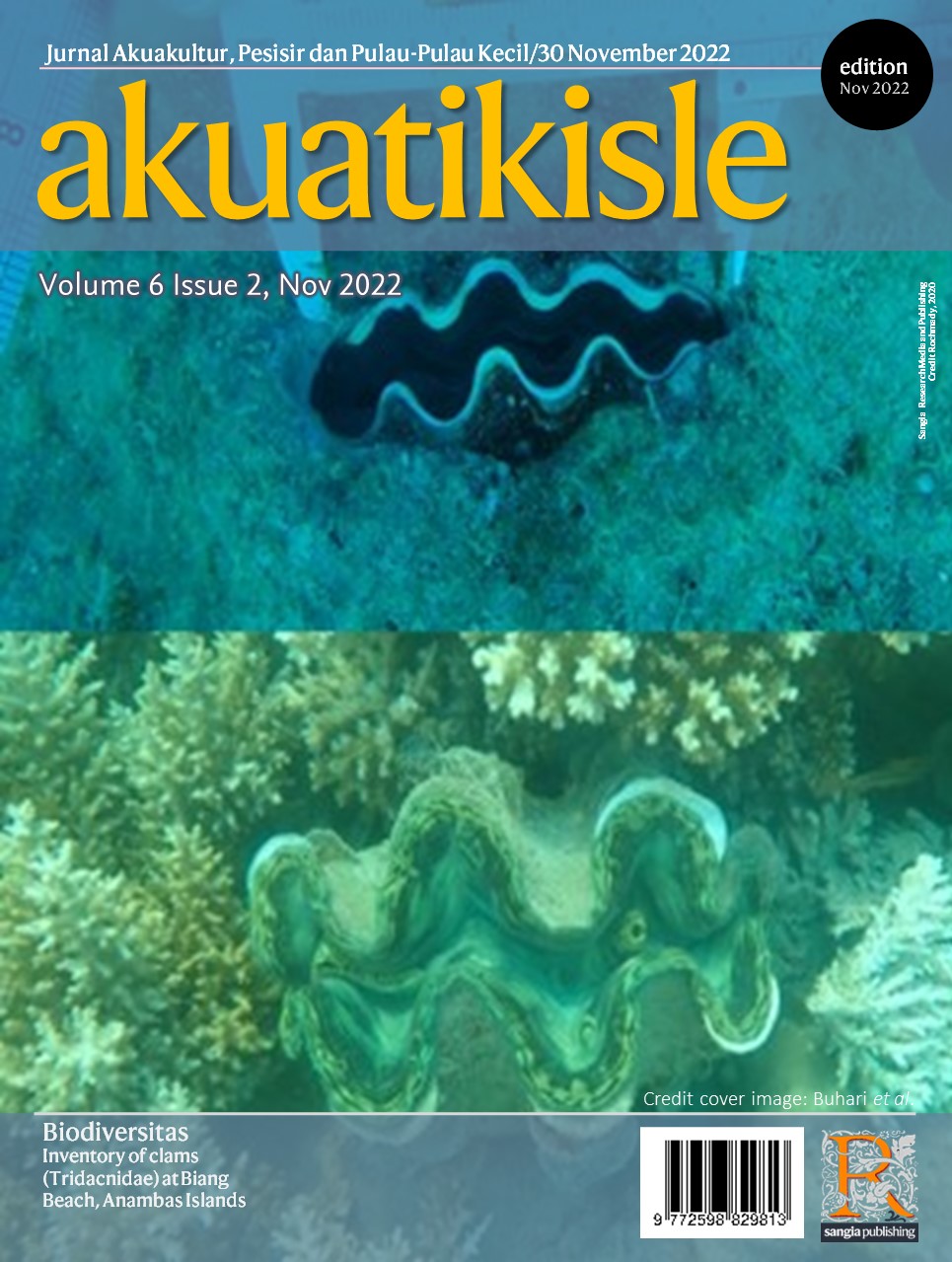Akuatikisle: Jurnal Akuakultur, Pesisir dan Pulau-Pulau Kecil
Full Length Article
The social construction of fisherwomen towards underage marriage in Sulaa Village, Betoambari District, Bau-Bau City, Southeast Sulawesi
Highlights
Generate NLP AI by Wizdam ID.
Abstract
The practice of underage marriage to fisherwomen is based on the socio-economic and cultural conditions of the community in constructing a social phenomenon. Underage marriage is a classic discourse that has occurred in society, both in urban, rural and coastal communities. Communities that practice underage marriages are usually influenced by the constructs that develop in the surrounding community. This paper uses a type of qualitative research with a purposive sampling approach. The type of research used is descriptive, based on case study research and documents (both printed and electronic), as well as other sources of information deemed relevant. The results of the study show that the practice of underage marriage occurs because of habitus or habits that are produced from the low economic conditions of fishing families so that underage marriage is considered as a solution for survival and also as social capital and cultural capital owned by fishing families, as well as the practice of buying age and the strength of religious knowledge is a supporting factor for the practice of underage marriages occurring in the area.
Keywords
Introduction
Section snippets
Material and Methods
Materials and methods from the full-text PDF of this article cannot be displayed.
Results
Results from the full-text PDF of this article cannot be displayed.
Discussion
Discussion from the full-text PDF of this article cannot be displayed.
Conclusions
Conclusions from the full-text PDF of this article cannot be displayed.
Acknowledgment
Acknowledgment from the full-text PDF of this article cannot be displayed.
Competing interest
The authors declare that they have no known competing financial interests or personal relationships that could have appeared to influence the work reported in this paper.
Conflict of interest
The authors declare that the research was conducted in the absence of any commercial or financial relationships that could be construed as a potential conflict of interest.
Ethical approval acknowledgements
No ethical approval required for this article. All procedures followed were in accordance with the ethical standards of the responsible committee on human experimentation (institutional and national) and with the Helsinki Declaration of 1975, as revised in 2008 (5)
Supplementary files
Data sharing not applicable to this article as no datasets were generated or analysed during the current study, and/or contains supplementary material, which is available to authorized users.
Bibliographic Information
Cite this article as:
-
Submitted
1 October 2022 -
Revised
13 November 2022 -
Accepted
17 November 2022 -
Published
19 November 2022 -
Version of record
19 November 2022 -
Issue date
30 November 2022
-
Academic subject
Social Fisheries Science; Social Science
Copyright
Copyright © 2022 Yusran Suhan, Sakaria Anwar, Nuvida Raf, Hasbi Hasbi, Manyus Radjab, Muhammad Sabiq. Sangia Research Media and Publishing. Production and hosting by Sangia (SRM™).  This work is licensed under a Creative Commons Attribution-ShareAlike 4.0 International License.
This work is licensed under a Creative Commons Attribution-ShareAlike 4.0 International License.
Disclaimer: All claims expressed in this article are solely those of the authors and do not necessarily represent those of their affiliated organizations, or those of the publisher, the editors and the reviewers. Any product that may be evaluated in this article or claim that may be made by its manufacturer is not guaranteed or endorsed by the publisher.
Comments on this article
By submitting a comment you agree to abide by our Terms and Community Guidelines. If you find something abusive or that does not comply with our terms or guidelines please flag it as inappropriate.



